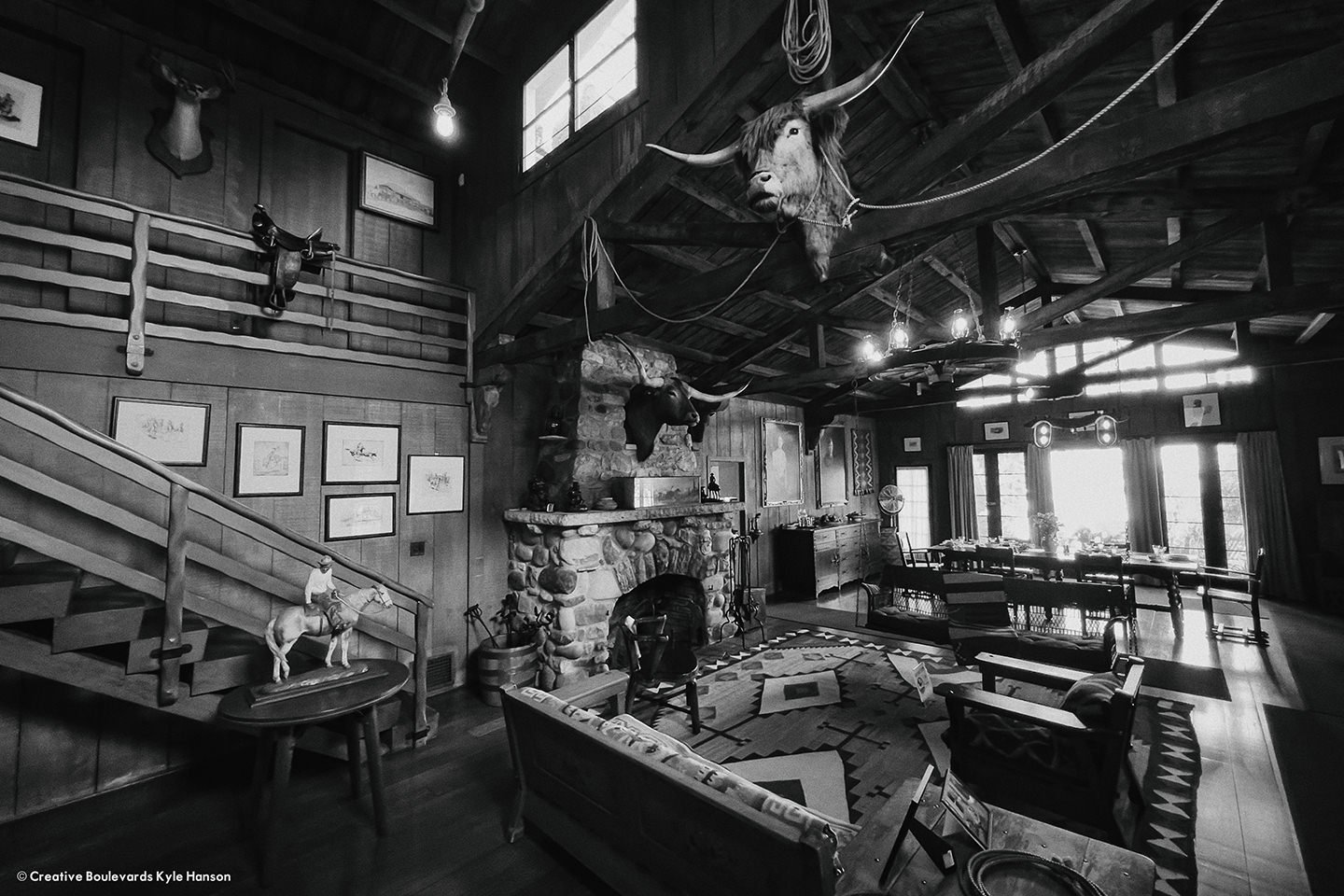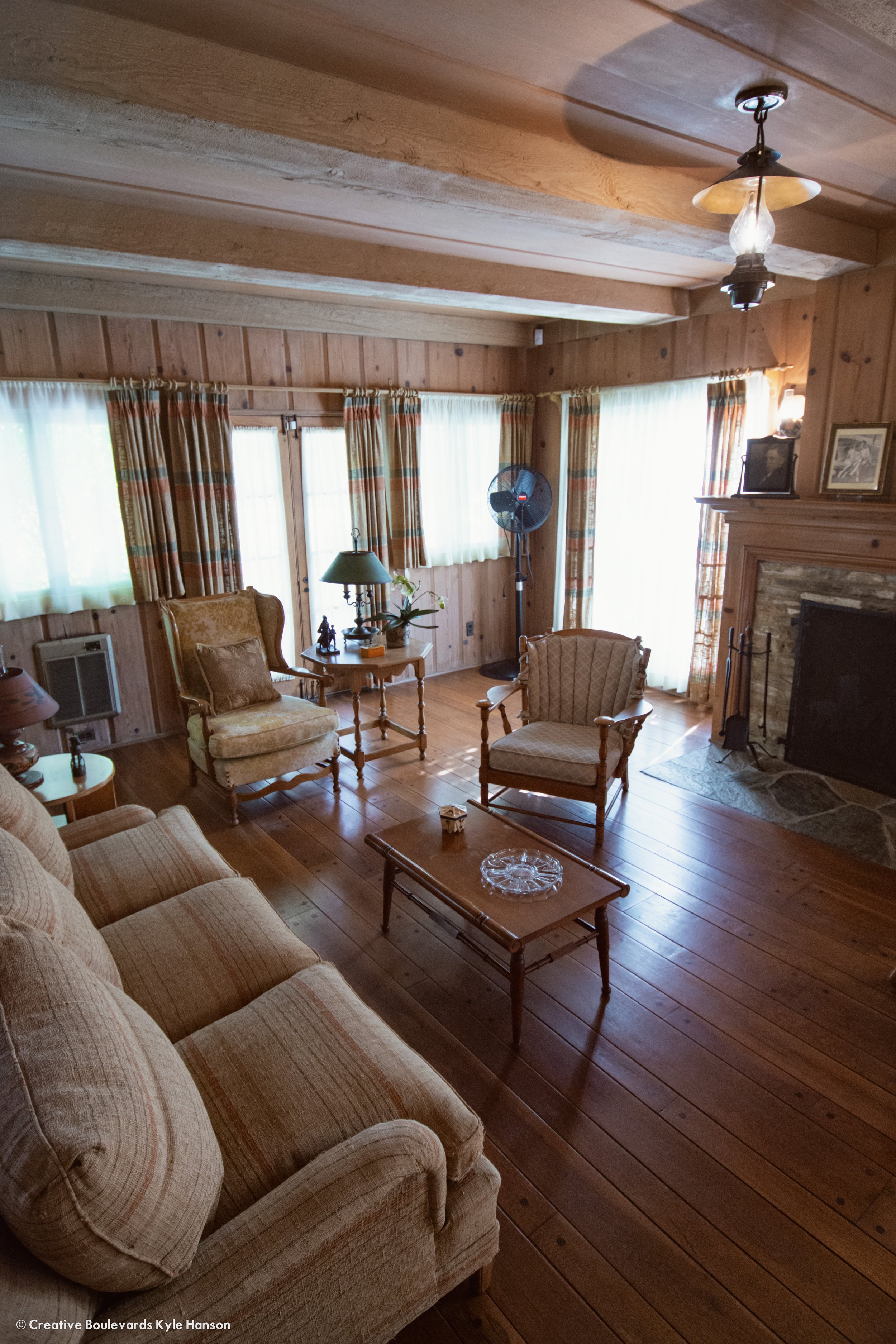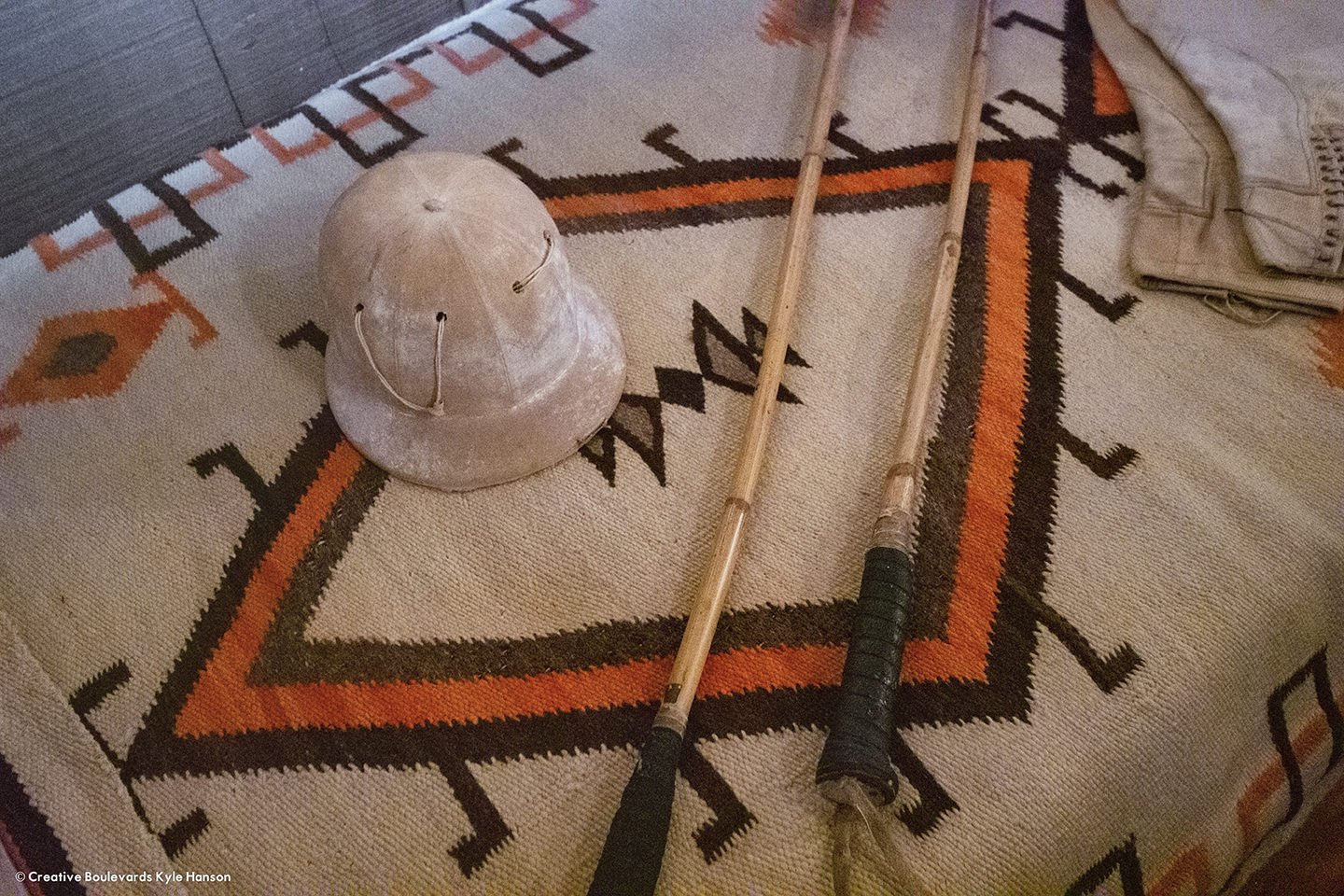
Will Rogers Ranch
The Life and Legacy of Will Rogers: A Glimpse Into His Historic Pacific Palisades Ranch in the Santa Monica Mountains
William Penn Adair Rogers, better known as Will Rogers, is celebrated as one of America’s most beloved humorists, actors, and social commentators of the early 20th century. Born on November 4, 1879, in Indian Territory (present-day Oklahoma), Rogers’ rise to fame was deeply rooted in his ability to connect with people through his wit, wisdom, and charm. He transcended mediums from vaudeville to film, radio, and print, becoming a national icon. His ranch home in the Pacific Palisades of the Santa Monica Mountains, California, once offered a tangible glimpse into the personal and professional life of this remarkable individual. Though tragically lost to a recent fire in January of 2025, the ranch house remains a testament to Rogers' legacy and a symbol of the eclectic life he led. I had the privilege to photograph the house a couple years ago and would love to help the legacy continue through these images and words.
Humanity is not yet ready for either real truth or real harmony - Will Rogers
Vintage postcard from the Creative Boulevards Antique Postcard Collection
Will Rogers: America’s Cowboy Philosopher
Will Rogers was the youngest of eight children born to a Cherokee family. His upbringing on a ranch instilled in him a love for horses and a talent for roping, which he later transformed into a career. Starting as a trick roper in Wild West shows, Rogers’ charisma and comedic timing soon took center stage. His rise to fame began in vaudeville, where his unique combination of roping tricks and comedic monologues set him apart. His ability to engage audiences with relatable humor and insightful commentary quickly gained attention.
By the 1920s and 1930s, Rogers had become a household name. He appeared in over 70 films, including silent features and "talkies," such as A Connecticut Yankee (1931) and State Fair (1933). His transition to sound films demonstrated his adaptability and cemented his status as a leading figure in Hollywood. Beyond acting, Rogers was a prolific writer. His syndicated newspaper column, "Will Rogers Says," reached millions of readers and provided humorous yet poignant commentary on current events, politics, and social issues. His words often carried a tone of common-sense wisdom, endearing him to a nation grappling with the Great Depression.
Rogers’ radio broadcasts further expanded his influence, making his voice a source of comfort and entertainment for countless listeners. His humor, often self-deprecating and sharply insightful, resonated with audiences of all backgrounds. One of his most famous quotes, “I never met a man I didn’t like,” encapsulates his affable nature and optimism. Despite his fame, Rogers maintained a grounded lifestyle that reflected his humble beginnings.
Interestingly, Rogers was an early advocate for aviation. He worked closely with famous aviators like Charles Lindbergh and Wiley Post, helping to promote the burgeoning field of air travel. Rogers’ enthusiasm for aviation made him a key figure in popularizing the industry, though it ultimately contributed to his untimely death.
It’s great to be great, but it’s greater to be human - Will Rogers
Building His Dream Home
In the late 1920s, as Rogers’ career flourished, he sought a retreat where he could balance his public life with personal pursuits. He purchased a sprawling parcel of land in the serene hills of Pacific Palisades of the Santa Monica Mountains, California, overlooking the Pacific Ocean. The property spanned approximately 186 acres and became a sanctuary for Rogers, his wife, Betty, and their three children.
The ranch house, completed in 1928, was designed in the Spanish Revival style, which was popular in Southern California at the time. The structure featured stucco walls, red-tiled roofs, and wooden beams, blending seamlessly with the natural landscape. Rogers worked closely with architects and craftsmen to ensure the home reflected his personality and values. The ranch was not merely a residence; it was a working ranch complete with horse stables, corrals, and riding trails. In addition to its practicality, the ranch became a retreat where Rogers could host friends, family, and colleagues, fostering deep connections with people from all walks of life.
Rogers also ensured the ranch was a place of learning for his children. The family maintained a close-knit bond, and Rogers took pride in teaching his children skills like horseback riding and roping. The property served as a backdrop for many cherished family memories, which were captured in personal photographs displayed throughout the home.
Half our life is spent trying to find something to do with the time we have rushed through life trying to save - Will Rogers
Inside the Ranch House: Artifacts and Legacy
Stepping inside the Will Rogers ranch house was like stepping back in time. The interior was a harmonious blend of rustic charm and refined taste, showcasing Rogers’ diverse interests and connections. The living room, with its large stone fireplace and exposed wooden beams, served as the heart of the home, where Rogers entertained friends, family, and notable guests, including celebrities, politicians, and dignitaries.
The house was filled with artifacts that offered insights into Rogers’ life. Among the treasures were:
Photographs and Memorabilia: Personal photographs adorned the walls, capturing moments with his family, fellow actors, and political figures. These images highlighted Rogers’ multifaceted life and his status as a beloved public figure.
Western Art and Decor: The ranch reflected Rogers’ deep connection to his cowboy roots. Western-themed artwork, Navajo rugs, and handcrafted furniture populated the rooms, creating a warm and inviting atmosphere. Rogers’ taste for authenticity and craftsmanship made the home uniquely personal.
Library and Writing Desk: Rogers’ writing desk was preserved as it was during his lifetime. Here, he penned many of his newspaper columns and correspondence. His library contained books on a wide range of subjects, reflecting his curiosity and intellectual pursuits. Topics ranged from politics and philosophy to agriculture and humor, showcasing the breadth of his interests.
Equestrian Legacy: Rogers’ love for horses was evident throughout the property. Saddles, bridles, and other equestrian gear were displayed, alongside trophies and awards from his roping competitions. Rogers often shared his passion for horsemanship with visitors, giving impromptu roping demonstrations and storytelling sessions.
Film and Stage Memorabilia: Items from Rogers’ film and theater career, including scripts, promotional materials, and awards, provided a glimpse into his contributions to the entertainment industry. His transition from live performance to the silver screen highlighted his adaptability and enduring popularity.
Notably, Rogers was known for his generosity. Many of the artifacts in the home were gifts from friends and admirers, reflecting his widespread influence and the mutual respect he shared with those in his orbit.
For that's all there is to success is satisfaction - Will Rogers
Transition to a State Historic Park
After Rogers’ untimely death in a plane crash in 1935, his wife Betty continued to live at the ranch until her passing in 1944. Recognizing its historical significance, the family donated the property to the state of California in 1944. In 1949, it officially became the Will Rogers State Historic Park.
The park preserved the ranch house and much of the surrounding land, allowing visitors to experience the natural beauty that Rogers cherished. Guided tours of the house provided an intimate look at his life, while the trails offered opportunities to explore the scenic landscape. Among the most popular attractions were the expansive riding trails, which echoed Rogers’ enduring love for horseback riding. The park also hosted events and educational programs, keeping Rogers’ legacy alive for future generations.
Popularity is the easiest thing in the world to gain and it is the hardest thing to hold - Will Rogers
Vintage postcard from the Creative Boulevards Antique Postcard Collection
Photography Dated July 13, 1946, Creative Boulevards Antique Postcard Collection
The Enduring Appeal of Will Rogers
Will Rogers’ Santa Monica Mountains ranch was more than just a historical site; it was a reflection of a man who embodied the American spirit. His humor, humility, and humanity continue to resonate, reminding us of the values that unite us. The ranch house and its artifacts once served as a bridge to the past, offering a window into the life of a man who brought joy and wisdom to millions.
Though the ranch house no longer stands, its memory endures as a symbol of Rogers’ contributions to culture and society. California’s efforts to preserve and share his legacy ensure that Rogers’ impact remains a guiding light for future generations. The scenic trails and open spaces of the park invite visitors to connect with the same natural beauty that inspired Rogers, fostering a sense of peace and reflection.
Whether through his films, writings, or the enduring charm of his story, Will Rogers remains a symbol of authenticity and resilience in an ever-changing world. His ability to bridge divides with humor and wisdom reminds us of the enduring power of connection and kindness—qualities that are as relevant today as they were during his lifetime. The legacy of his ranch, though altered by time, continues to inspire all who learn about his extraordinary life.























































